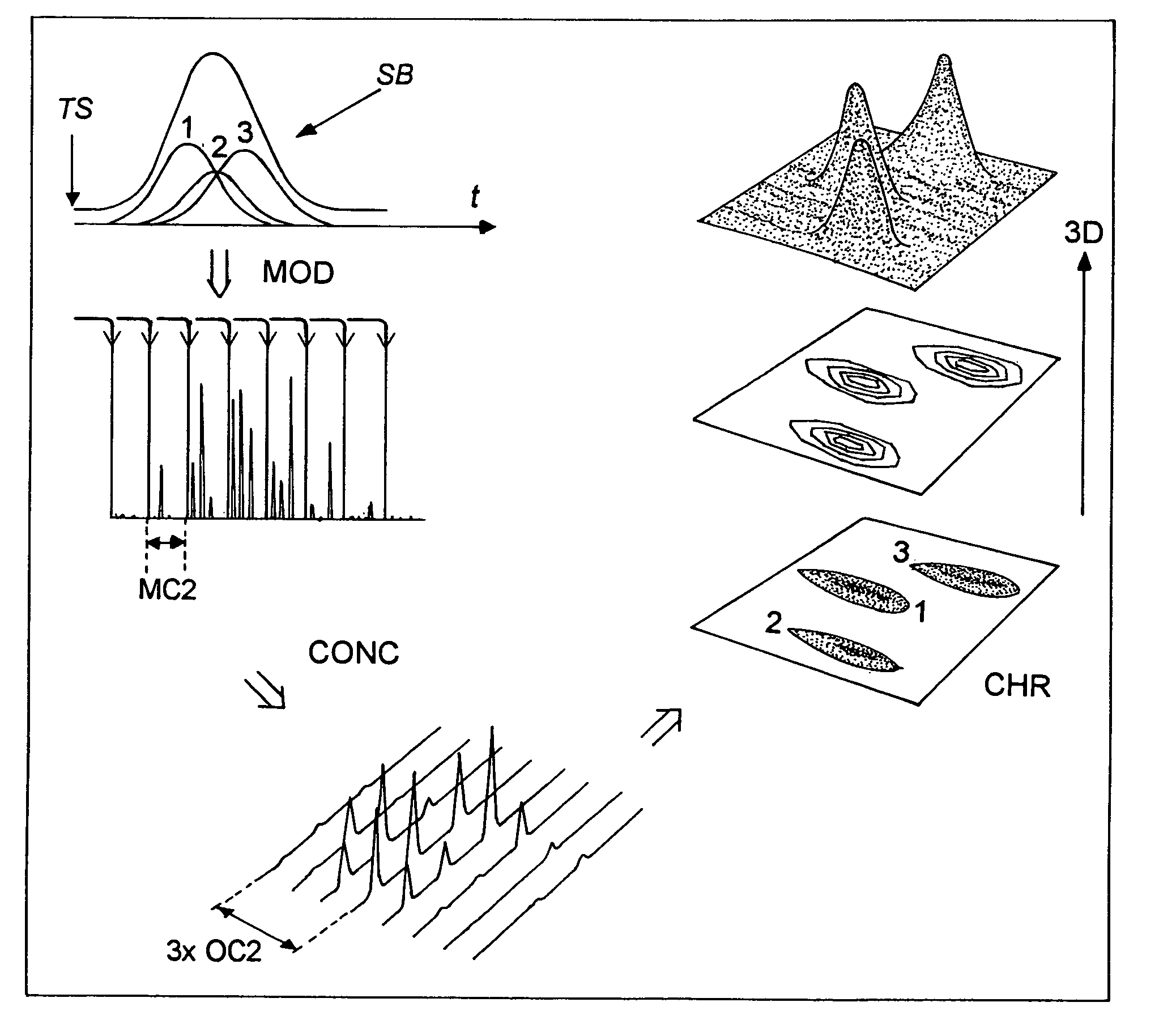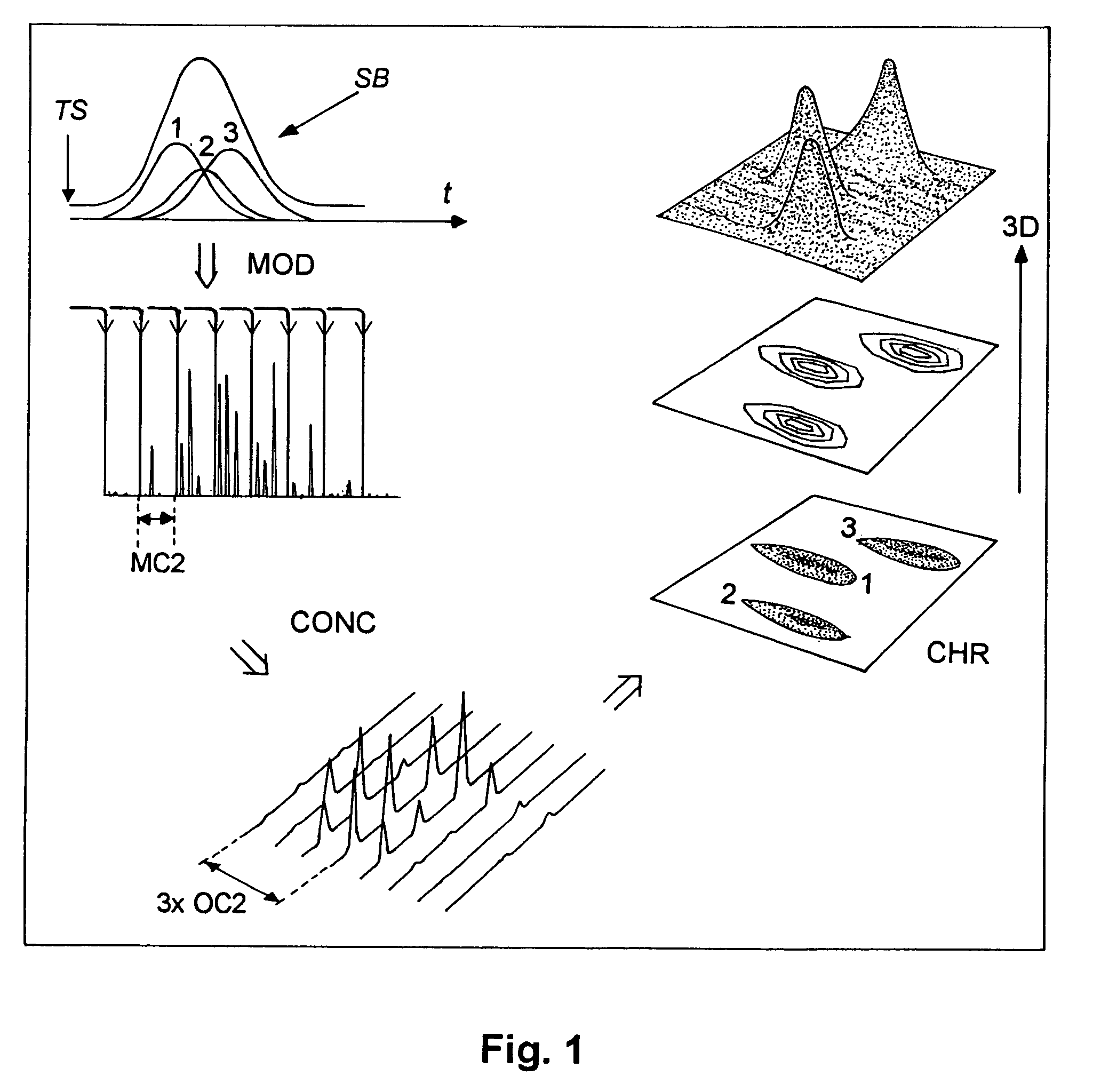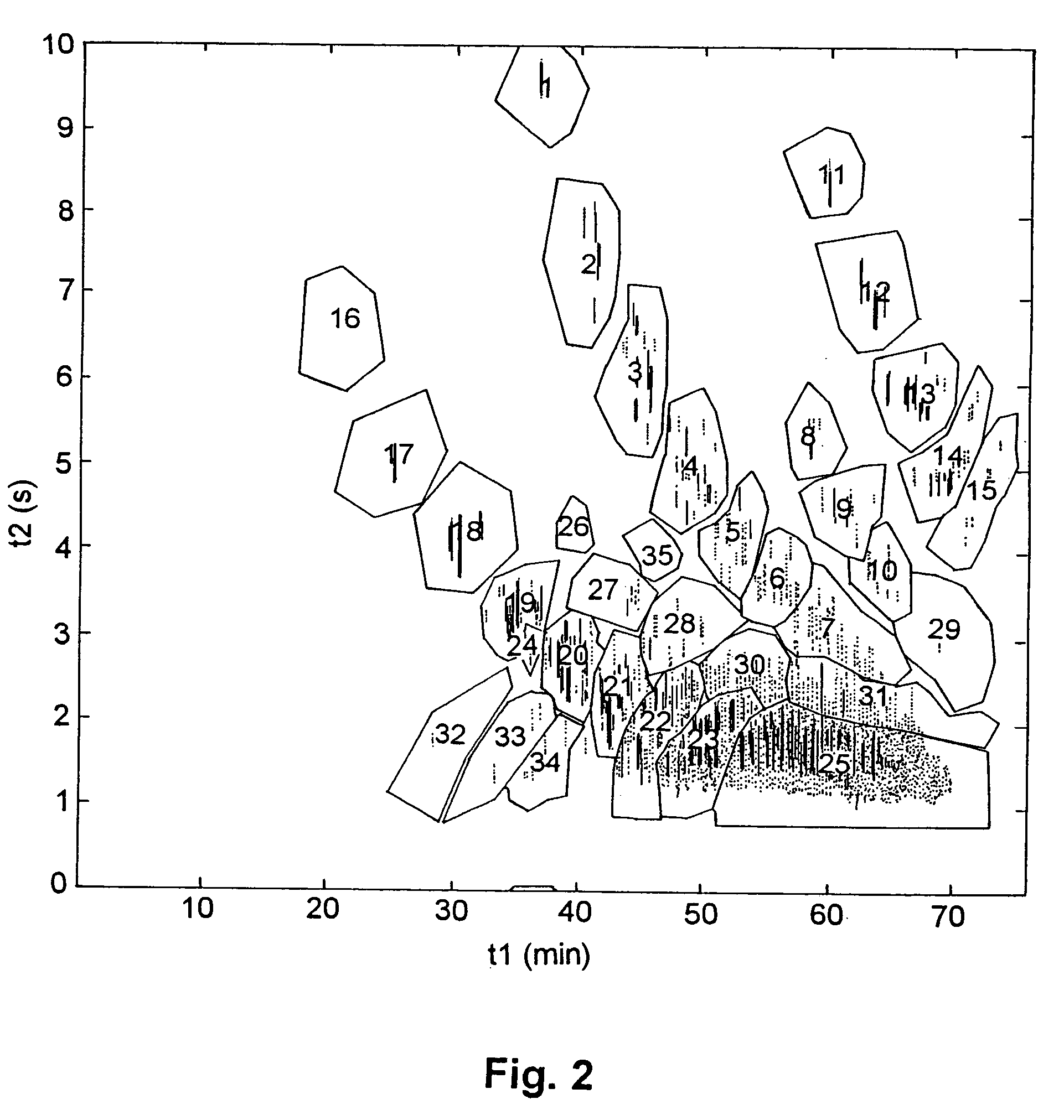Method of determining physico-chemical properties of a petroleum sample from two-dimensional gas chromatography
a gas chromatography and petroleum sample technology, applied in the field of physical and chemical analysis of petroleum samples, can solve the problems of large volume of samples, inability to systematically access the measurement of physical properties of refiners, and high cost of tim
- Summary
- Abstract
- Description
- Claims
- Application Information
AI Technical Summary
Benefits of technology
Problems solved by technology
Method used
Image
Examples
Embodiment Construction
[0051]The invention relates to a method of determining the physical properties of a petroleum sample. These macroscopic physical properties are observed at the scale of the sample. They can be for example:
[0052]Combustion Properties:[0053]octane number (research or motor (RON or MON), property measured on gasolines),[0054]cetane number (CN, property measured on diesel fuels),[0055]smoke point (property measured on kerosenes),[0056]gravity (at 15° C.),
[0057]Cold Properties:[0058]cold filter plugging point (CFPP),[0059]cloud point,[0060]pour point,[0061]freezing point (property measured on kerosenes).
[0062]According to the method, the value of a given physico-chemical property is determined from the molecular composition of the sample, obtained from two-dimensional gas chromatography (GC-2D). The method comprises three major stages:
A—carrying out two-dimensional gas chromatography of the petroleum sample and constructing a two-dimensional chromatogram;
B—determining the concentrations ...
PUM
| Property | Measurement | Unit |
|---|---|---|
| cetane number | aaaaa | aaaaa |
| physical property | aaaaa | aaaaa |
| surface area | aaaaa | aaaaa |
Abstract
Description
Claims
Application Information
 Login to View More
Login to View More - R&D
- Intellectual Property
- Life Sciences
- Materials
- Tech Scout
- Unparalleled Data Quality
- Higher Quality Content
- 60% Fewer Hallucinations
Browse by: Latest US Patents, China's latest patents, Technical Efficacy Thesaurus, Application Domain, Technology Topic, Popular Technical Reports.
© 2025 PatSnap. All rights reserved.Legal|Privacy policy|Modern Slavery Act Transparency Statement|Sitemap|About US| Contact US: help@patsnap.com



